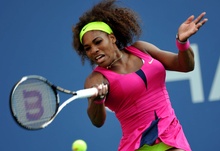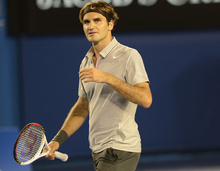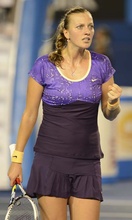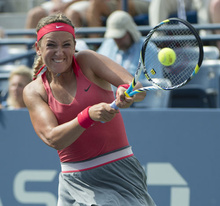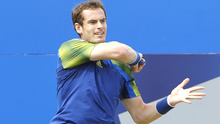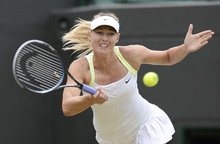Don't miss any stories → Follow Tennis View
FollowMelbourne, Australia
The Season-Opening Slam
Most to Gain
The 13-time major champion withdrew from the 2013 Australian Open as he recovered from the most recent of his knee injuries. Since Nadal has no points to defend there in 2014, he can consolidate his rankings lead over defending champion Novak Djokovic and ensure that he stays No. 1 for many weeks to come. While even a respectable result would achieve that goal, Nadal also would tie Pete Sampras for second all-time in major titles if he captures the Australian Open crown. And plenty of evidence suggests that he can. Nadal authored a 30-match winning streak on hard courts in 2012-13 that spanned three Masters 1000 shields and his second US Open title. Moreover, victories over Djokovic at two majors last year snatched back the momentum in that rivalry at the summit of the ATP. The main concern for Nadal, as usual, lies in the sustainability of his health. Sandwiched between his 2009 title run and 2012 finals appearance in Melbourne were two quarterfinal exits blighted by injury. His fate at the 2014 Australian Open will hinge as much on that factor as on anyone he faces Down Under. After all, no man in the top 30 holds a winning record against Nadal.
Like Nadal, the women’s No. 1 eyes a tie for second place on her Tour’s major titles list if she can seize the Australian Open one more time. Still lethal at age 32, Serena would equal Chris Evert and Martina Navratilova with 18 majors. No player, man or woman, has won more often in Melbourne than she has, and her six titles there comprise her highest total from any of the four majors. But Serena did not enjoy her last two visits Down Under, which ended in pre-semifinal losses to heavy underdogs Ekaterina Makarova and Sloane Stephens. A string of similar disappointments at Roland Garros did not dim her determination to set the record straight last year, so she should arrive at the 2014 Australian Open with her intensity and competitive desire redoubled. Even more than in Nadal’s case, health looms as large for the 17-time major champion as any opponent. A career year in 2013 that sprawled across more than 80 matches may have taken its toll on her aging body. While Serena fell to main rival Victoria Azarenka twice on hard courts last year, she has not lost at a major to anyone in the current WTA top 10 for nearly a decade.
The same age as Serena, her fellow 17-time major champion stands in a very different position from hers entering 2014. Federer reached the semifinals at last year’s Australian Open, but his results spiraled downward swiftly from there. Stunned by Sergiy Stakhovsky in the second round of Wimbledon and Tommy Robredo in the fourth round of the US Open, he ended a season without a major final for the first time since 2002. Expectations have dwindled accordingly as the new season awaits. This slump looks ominously like a terminal decline to most observers, but Federer has proven them wrong before. Two and a half years, a much longer span than the current drought, separated his 16th major at the Australian Open in 2010 from his 17th major at Wimbledon in 2012. Unlikely to defeat a healthy Nadal in a best-of-five format, Federer probably will need some help from his draw. An 18th major would gain him insurance against being eclipsed by his Spanish archrival as the greatest player of all time. Still, Federer need not lift the trophy to reassert himself. A deep run and a victory over a significant rival would restore him to relevance and silence the doubters for the foreseeable future.
Petra Kvitova
Most to Lose

Novak Djokovic
The first man in the Open era to win three straight Australian Open titles, Djokovic has claimed four of his six majors Down Under. While he receded at other majors in 2012-13 after his career year in 2011, the Serb continued to burst out of the gates in Melbourne with his fiercest form. Turning the Australian Open into his central citadel makes any setback there more damaging than at other tournaments. His fans may feel some tremors of uncertainty after Djokovic offered little resistance in finals at Wimbledon and the US Open against his two main rivals, Nadal and Andy Murray. Two years ago, moreover, he came within six points of falling to Nadal at the Australian Open in the longest major final ever. Losing the No. 1 ranking in October may motivate Djokovic in the new year. He thrives when he has a goal to seek or a point to prove, and the medium-speed hard courts at this major suit his game more than any other surface. Still, a title defense in Melbourne would merely maintain the status quo rather than change the landscape atop the ATP. Anything less would change that landscape decisively.
Victoria Azarenka
The Scot has tasted three flavors of heartbreak in Melbourne over the last four years, finishing runner-up twice to Djokovic and once to Federer. But Murray freed himself from his relentless demons at Wimbledon last summer, so he should believe that he can conquer the most obdurate obstacles. His balanced game and superb fitness have thrived in these courts and conditions, but Murray must shake off any lingering rust after cutting short his 2013 campaign for back surgery. If he falls short of defending last year’s finals appearance at the Australian Open, Murray could fade even further behind Djokovic and Nadal in the rankings. His career losing record against each of those champions would not bode well if he needed to defeat both of them to win a major, which could prove the case as long as he ranks outside the top two. More broadly, Murray must capitalize on early hard-court tournaments such as the Australian Open to build momentum for his Wimbledon title defense, since clay will offer him few rewards. He will hope to avoid an explosive shot-maker in the early rounds as he regains his timing.
Maria Sharapova
This article is from the Jan/Feb '14 - Maria Sharapova issue |
|

|
SOLD OUT Subscribe now and you'll never miss an issue!
|


